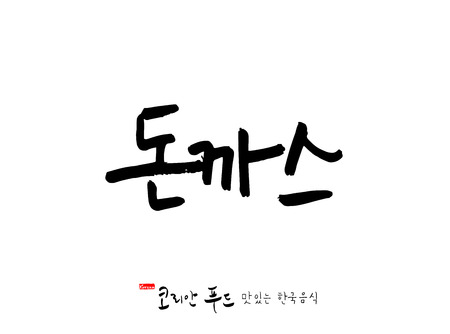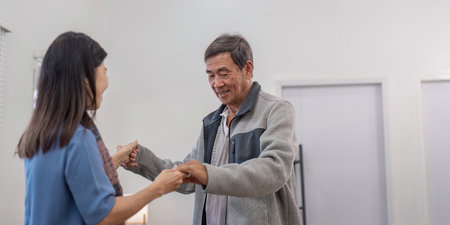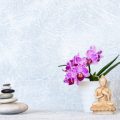Introduction to the Bagua Map
The Bagua Map is a fundamental tool in Feng Shui, an ancient Chinese practice focused on harmonising individuals with their environment. For those unfamiliar with its origins, the Bagua Map serves as a spatial blueprint, dividing spaces into eight key areas that correspond to different aspects of life, such as career, relationships, and health. Its purpose is to identify energetic patterns within a home or workplace and guide adjustments for improved well-being and prosperity. While deeply rooted in Eastern philosophy, the Bagua Map has steadily gained recognition across the globe, including here in the UK. British practitioners and enthusiasts have found practical value in using the map to create more balanced and inviting living environments, blending traditional Feng Shui principles with contemporary British homes and lifestyles. Understanding its foundational role sets the stage for exploring how this unique tool can be thoughtfully adapted within a UK context.
2. Historical Origins and Philosophical Background
The Bagua Map, or 八卦图 (Bāguà Tú), is deeply rooted in the philosophical traditions of ancient China. Its origins can be traced back over 3,000 years to early Taoist thought and the foundational text known as the I Ching, or Book of Changes. The I Ching presents a worldview centred on the interplay of dynamic forces—Yin and Yang—and the cyclical nature of life. This philosophical framework laid the groundwork for the development of the Bagua Map, which became a central tool in Feng Shui practice.
At its core, the Bagua consists of eight trigrams—each representing a fundamental aspect of life and natural phenomena. These trigrams are arranged around a central space, symbolising unity and balance. The arrangement reflects a holistic approach to understanding how energy, or Qi, flows through spaces and affects those who inhabit them.
Key Principles Underlying the Bagua Map
| Principle | Description |
|---|---|
| Yin and Yang | The duality of opposing yet complementary energies that shape all aspects of existence. |
| Five Elements | Wood, Fire, Earth, Metal, Water—interacting cycles that underpin change and harmony. |
| Qi (Energy) | The life force believed to circulate through environments and influence wellbeing. |
| Trigrams (Bagua) | Eight symbols representing different areas of life, mapped spatially to guide environmental arrangement. |
For those in the UK exploring Feng Shui, understanding these historical and philosophical foundations offers valuable context. It bridges Eastern tradition with Western living by providing insight into why certain placements or adjustments are made within homes and offices. While culturally distinct from British architectural norms, these underlying principles resonate with universal concepts such as balance, flow, and harmony—qualities increasingly sought after in modern British interiors.

3. Understanding the Structure and Key Elements
The Bagua Map is a fundamental tool in Feng Shui, providing a visual guide to understanding how energy flows within a space. Its structure is both methodical and symbolic, composed of eight distinct sectors arranged around a central area. Each sector represents a specific aspect of life, such as wealth, health, relationships, or career. In essence, the Bagua acts as an overlay that can be placed upon the floor plan of your home or workplace in the UK, helping you identify which areas correspond to different life themes.
Bagua Map Layout
The Bagua is typically depicted as an octagonal shape divided into nine sections—eight outer trigrams and one central area. For practical purposes in the West, it is often presented as a square grid (a 3×3 matrix), making it easier to apply to modern British homes with their more regular layouts. The centre of the map represents balance and overall wellbeing, while each surrounding sector aligns with compass directions and life categories.
Symbols and Trigrams
Each sector of the Bagua Map contains a trigram from the ancient Chinese text, the I Ching. These trigrams are made up of three lines (either broken or unbroken), representing yin and yang energies. The symbols are not just decorative; they encode important information about elemental influences—wood, fire, earth, metal, and water—which can be thoughtfully incorporated into your environment through colours, shapes, and materials commonly found in British interiors.
Meanings of Each Sector
Wealth & Prosperity (Southeast): Linked to financial luck and abundance. Enhancements might include green plants or symbols of growth.
Fame & Reputation (South): Associated with recognition and social standing. Incorporate elements like bright lighting or the colour red.
Love & Relationships (Southwest): Connects to personal relationships and partnerships. Use pairs of objects or gentle pink tones.
Family & Health (East): Represents family ties and physical vitality. Wood elements such as oak furniture can support this sector.
Centre: The heart of the Bagua symbolises harmony and balance; keeping this area uncluttered supports overall wellbeing.
Creativity & Children (West): Linked to innovation and offspring. Whites and metallics reflect this zone’s energy.
Knowledge & Self-Cultivation (Northeast): Focuses on learning and personal development—bookshelves or study nooks are ideal here.
Career & Life Path (North): Relates to professional journeys; use water features or darker shades for enhancement.
Helpful People & Travel (Northwest): Connects to mentors, networking, and travel opportunities. Grey tones or imagery of distant places can be supportive.
This structured approach allows anyone in the UK to systematically interpret their living space using the Bagua Map’s rich symbolism—making it accessible regardless of whether you live in a Victorian terrace or a modern flat.
4. Adapting Bagua to British Homes and Lifestyle
When interpreting and applying the Bagua Map in the UK, it is vital to consider both the architectural characteristics of British homes and the unique cultural context. Many traditional UK residences—be they Victorian terraces, Edwardian semis, or post-war flats—differ significantly from classic Chinese layouts. Below is a practical approach for adapting the Bagua Map to these living spaces:
Interpreting the Bagua Map in UK Floor Plans
The first step involves overlaying the Bagua grid onto your home’s floor plan. In the UK, entrance doors are commonly located at the front centre or side of the property, rather than aligned with a grand foyer as in some Asian designs. To adapt, align the bottom row of the Bagua (Knowledge, Career, Helpful People) with your main entrance wall, regardless of its position.
Common British Home Layouts and Bagua Application
| Home Type | Typical Entrance Placement | Bagua Alignment Tips |
|---|---|---|
| Victorian Terrace | Front or Side Door, Narrow Hallway | Align Bagua base with entry wall; treat hallway as part of Career area. |
| Semi-Detached/Detached | Front Centre Door | Main entrance aligns naturally with centre bottom of Bagua grid. |
| Modern Flat | Side or Internal Corridor | Apply Bagua to main living space if open-plan; otherwise to entire flat. |
Room Usage and Cultural Adaptation
British homes often feature multi-purpose rooms (e.g., dining room doubling as an office). Assign each zone of the Bagua based on primary function but allow flexibility; for instance, if your ‘wealth’ sector falls within a lounge corner, keep it tidy and add a healthy plant or artwork symbolising abundance. The key is intention: small personal touches resonate even in compact spaces.
Tackling Architectural Challenges
Corners cut off by bay windows or chimney breasts can disrupt energy flow. Use mirrors, lighting, or décor to symbolically ‘complete’ missing areas of the Bagua. For homes with shared entrances (such as maisonettes), focus your efforts on your individual living space and entryway.
Practical Tips for Everyday Application
- Start simple: Clear clutter from your entrance (‘Career’) for smoother opportunities.
- Add meaningful objects: Place family photos in the ‘Family’ sector, literature in ‘Knowledge’, and so forth.
- Avoid overwhelming changes: Small adjustments like colour accents or fresh flowers can subtly enhance each zone.
- Reflect local culture: Incorporate British motifs or heirlooms that carry positive associations for you into relevant Bagua areas.
This pragmatic approach allows you to benefit from Feng Shui principles while respecting both British architecture and personal lifestyle preferences.
5. Practical Application: Case Studies and Tips
Integrating the Bagua Map into British interiors can seem challenging at first, but with a practical approach, it becomes an engaging and rewarding process. Below, I will share real-life examples from UK homes and provide straightforward advice to help you successfully adapt the Bagua principles to your living space.
Case Study 1: Victorian Terrace in Manchester
A young couple wished to enhance harmony and prosperity in their Victorian terrace. After overlaying the Bagua Map on their ground floor plan, they realised their front entrance aligned with the Career sector (Kan). To activate this area, they placed a navy blue doormat and hung a mirror in the hallway—both symbols of water element energy. Within months, both experienced positive changes in their professional lives.
Tip:
When working with traditional UK architecture, focus on the main entrance as your starting point. This aligns the Bagua Map’s career section with your doorway, making adjustments more intuitive.
Case Study 2: London Flat Share
In a shared London flat, roommates used the Bagua Map to improve relationships within the home. The Relationship sector (Kun) fell in one corner of their living room. They added a pair of pink cushions and a shared photo frame to this spot. Communication between flatmates noticeably improved, leading to a warmer atmosphere for everyone.
Tip:
If you live in a shared space or rental property, opt for temporary decor changes such as textiles or moveable items rather than structural alterations. This keeps your application flexible and landlord-friendly.
Case Study 3: Countryside Cottage in Devon
An artist living in rural Devon wanted to encourage creativity. The Bagua Map revealed that her creative zone (Dui) was cluttered with paperwork and unused furniture. After decluttering and introducing metallic accents and white art supplies storage, she found herself more inspired and productive.
Tip:
Tidy up and clear out stagnation before making energetic enhancements. In British homes where storage is often at a premium, even small changes can have a big impact on flow.
General Advice for UK Homes
– Respect architectural quirks such as bay windows or fireplaces by creatively integrating Bagua recommendations.
– Use classic British colours—such as deep greens or royal blues—to match Bagua elements without clashing with local aesthetics.
– Remember that intention is key: even subtle changes can shift the energy if done thoughtfully.
– Consult local resources or professionals familiar with both Feng Shui and British housing styles for tailored advice.
6. Addressing Common Misconceptions in the UK
When discussing the Bagua Map and Feng Shui in the UK, it’s important to acknowledge the widespread misconceptions that have shaped public perception. Many British people encounter Feng Shui through popular media or superficial home décor trends, which can lead to misunderstandings about its purpose and cultural significance.
Myth 1: Feng Shui Is Merely Decorative
A common myth is that Feng Shui, particularly the use of the Bagua Map, is just about rearranging furniture or adding lucky ornaments for aesthetic appeal. In reality, traditional Feng Shui is rooted in centuries-old Chinese philosophy, focusing on balancing energy (Qi) within a space to promote wellbeing. The Bagua Map is a tool for analysing and adjusting different life areas within a home or office, not simply for decorative purposes.
Myth 2: The Bagua Map Is a Universal Template
Some assume that the Bagua Map is applied in exactly the same way across all cultures and buildings. However, its use is highly contextual. For effective application in British homes—which often feature unique layouts and architectural styles—practitioners must adapt traditional principles with sensitivity to local context, climate, and historical building features.
Myth 3: Feng Shui Conflicts with Western Beliefs
Another misunderstanding is that Feng Shui is incompatible with British values or Western belief systems. In practice, many people in the UK integrate Feng Shui alongside their own traditions, seeing it as a holistic approach to enhancing comfort and harmony at home. It’s not inherently spiritual or religious; rather, it’s about fostering positive environmental psychology.
Addressing Skepticism
The British penchant for scepticism often leads to viewing Feng Shui as superstition. While some aspects may seem mystical, many recommendations align with evidence-based design—for example, maximising natural light or encouraging tidy spaces. By understanding the underlying logic, British homeowners can appreciate how Bagua-based adjustments might improve mood and productivity.
The Value of Accurate Information
To make informed decisions, it’s crucial for those interested in Feng Shui to seek reputable sources and qualified practitioners familiar with both traditional principles and the realities of UK living spaces. Dispelling myths enables individuals to approach the Bagua Map thoughtfully and effectively.
7. Conclusion and Further Resources
To sum up, understanding the Bagua Map requires not only an appreciation of its ancient Chinese origins but also a willingness to adapt its wisdom to contemporary British spaces and lifestyles. We have explored how the Bagua Map’s structure—its eight sectors and central area—can be thoughtfully mapped onto UK homes, offices, and gardens while respecting both Feng Shui principles and local cultural sensibilities. The key takeaways are that the Bagua Map is a flexible tool for personal growth, well-being, and harmony, and that mindful adaptation is essential when applying it within the context of British architecture and traditions.
If you are interested in delving deeper, there are several trusted resources available. For foundational knowledge, books such as “The Complete Illustrated Guide to Feng Shui” by Lillian Too or “Feng Shui for Dummies” by David Daniel Kennedy offer comprehensive overviews. The Feng Shui Society UK (www.fengshuisociety.org.uk) provides articles, events, and directories of accredited practitioners familiar with British contexts. Local libraries often carry guides tailored for UK readers, while online platforms like the BBC Homes section occasionally feature insights into adapting Eastern philosophies for British living. As with any practice involving cultural integration, seeking advice from experienced consultants who understand both Feng Shui and the nuances of UK environments is highly recommended. By building on these foundations and drawing from reliable sources, you can confidently continue your journey towards creating harmonious and supportive spaces across the UK.


